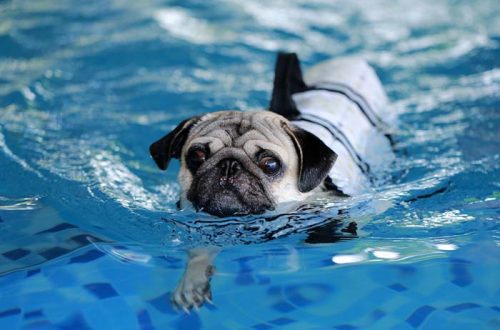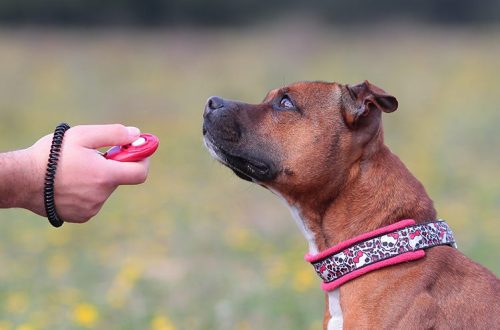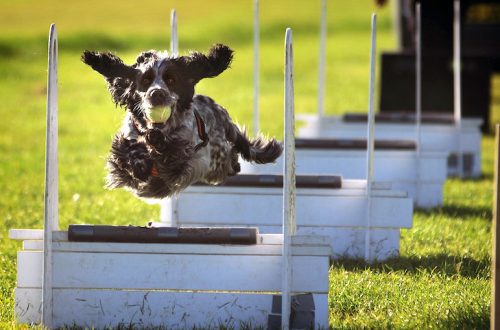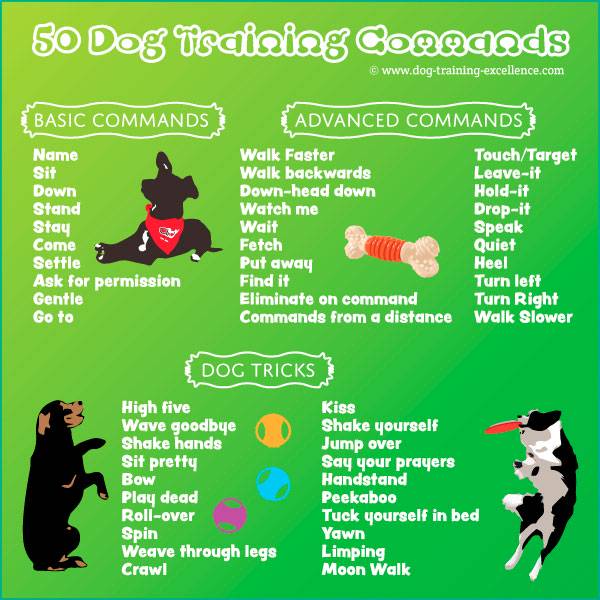
Dog training: how to teach basic commands?
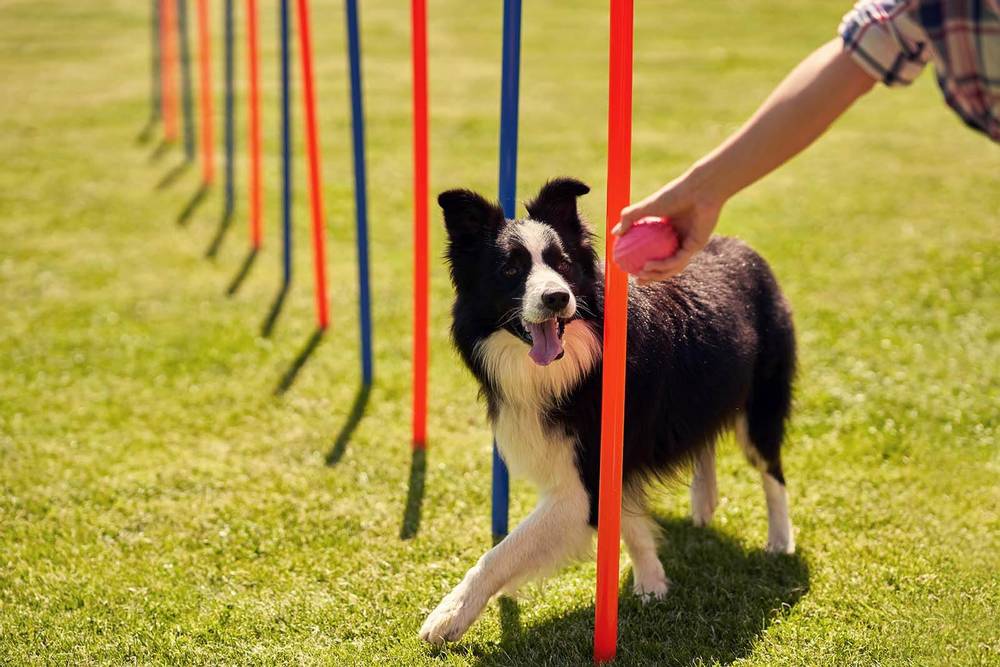
Contents
Why train a dog?
“An obedient dog is a happy owner.” Many dog owners agree with this statement. After all, having decided to let a pet into our lives, we want to see in it a friend, a source of joy and pride. However, if the pet constantly behaves as he pleases and does not obey at all, then he becomes a source of stress for the owner. When the relationship between the dog and its owner does not add up, both are unhappy. Therefore, it is very important not to miss the moment and start training on time.
A properly trained dog is the responsibility of each owner not only for the well-being of the one he has tamed, but also for his own peace of mind. A little training will benefit any dog, regardless of age, breed or temperament. For the owner himself, regular exercise with the animal will help to better understand the needs of the latter, become an excellent reason for training and open up new opportunities: the better the pet behaves, the easier it is to take it with you wherever you go.

Self and professional training
Proper training is one of the basic needs of your pet. The sooner he learns to understand you and respond to basic commands for dogs, the higher will be the level of your mutual understanding in the future. And this, in turn, is the key to a long and happy coexistence.
Dog training should be regular, so before you start, make your own training plan. It is worth starting the training of a four-legged friend at the age of two to three months during home quarantine after vaccination. First, teach him to respond to the nickname, then to the collar and leash. One of the advantages of home workouts is simplicity and accessibility, you don’t even have to leave the house or use complex devices.
Teaching a dog commands at home is quite realistic if you have sufficient knowledge. But here the owners may have difficulties. Unlike a dog handler, an amateur does not know for sure how to properly train a dog, and therefore may not achieve the desired result. Also, the owner, who does not have the necessary knowledge, is unlikely to be able to reveal all the talents of his pet, and therefore make him truly happy. This is the disadvantage of home training.
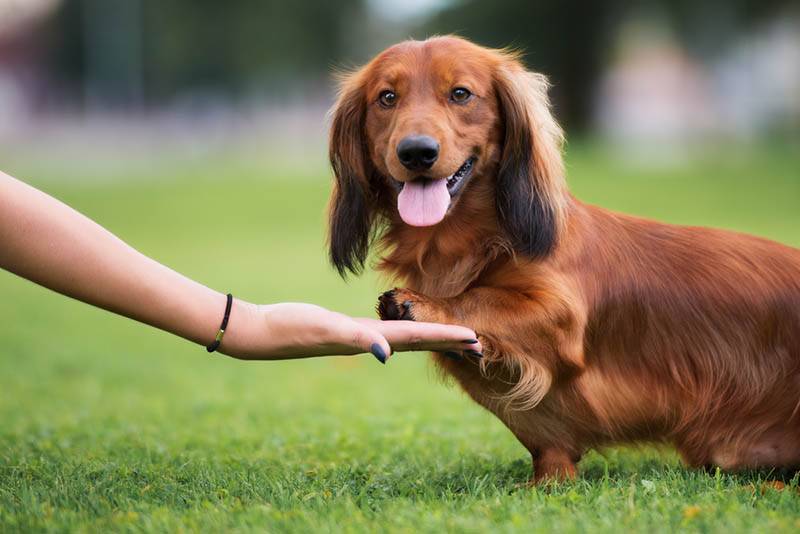
Therefore, it is still recommended to contact specialists who will tell you what commands the dog should know and why. If we are talking about a puppy, then, having taught him the basic commands for dogs, at the age of four months, you should take a course of educational training. It is never too late to turn to a cynologist for help: he will select the optimal program and help to realize the full potential of the pet. Among the disadvantages for the owner is the need to find time, effort and funds for paid classes, which is not always available to everyone. It is also important to choose a good training center and trusted professionals so as not to waste money and not harm the dog.
Remember: professional training does not replace your own participation in raising a pet; the owner himself must establish a personal trusting relationship with him. The relationship between the owner and the ward can only be reinforced with the help of professional courses.
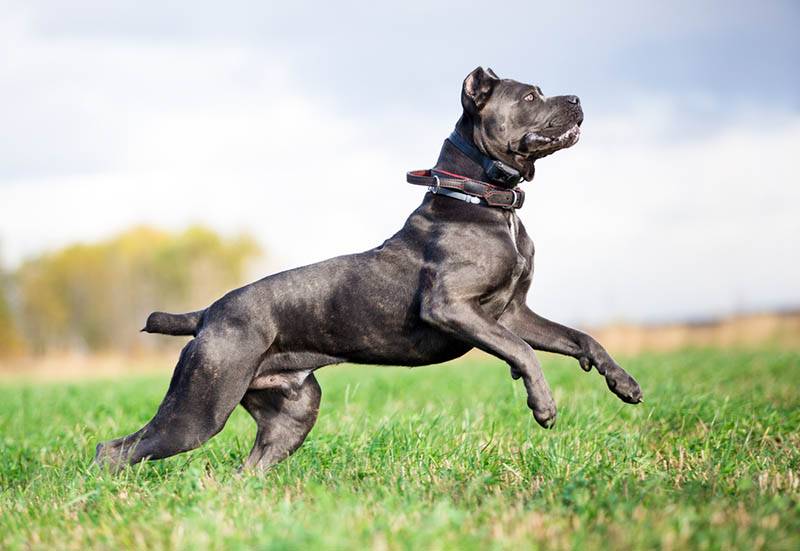
Professional courses
There are different types of professional courses and methods of dog training, depending on what the owner wants to teach his pet and its characteristics. Let’s take a look at some of the most popular ones.
General training course (OKD)
The author of the course is a domestic cynologist and dog breeder Vsevolod Yazykov. Related to the national standard, OKD celebrated its centenary in 2020. This course can be considered a preparatory, initial stage of dog training. After that, you can teach your pet specialized commands for dogs.
The general course of training involves accustoming the dog to the following:
response to the nickname given to him;
wearing a leash, collar or harness;
being near the owner (knowledge of the “Near” command),
moving together in close proximity (the dog must walk to the left of the person);
the ability to show teeth, wear a muzzle;
performing basic commands for dogs, such as “Sit”, “Lie down”, “Stand”, “Voice” and other basic skills;
response to the owner’s call (knowledge of the “Come to me” command), approach and return back to the place;
execution of the command “Take!” (fetching – at the command of the owner, grab a stick and bring it back, for example);
termination of actions on the command “Fu”;
overcoming obstacles (in the form of fences, barriers, descents and ascents, etc.);
shot response.
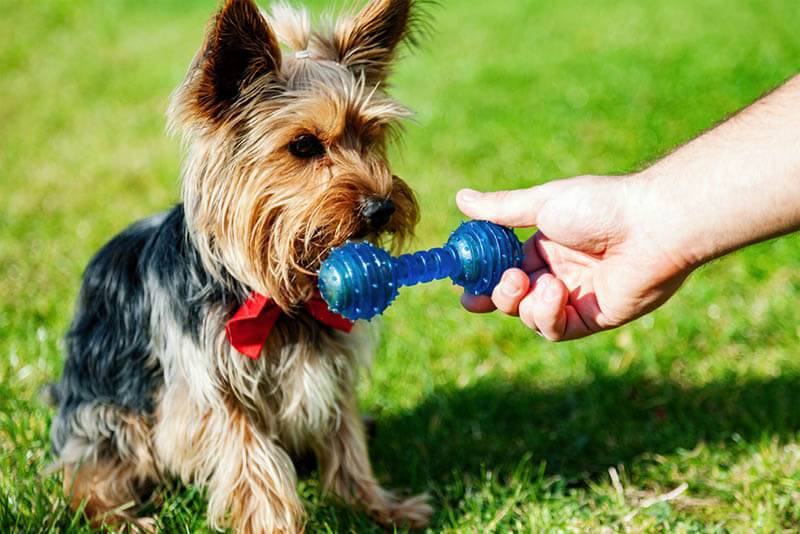
The course is suitable for training a young pet, as well as an adult dog from scratch. The dog must demonstrate all the skills described above in the exam, which is carried out at the cynological school following the results of training.
On special training grounds, the owner and his ward can work in pairs under the supervision and guidance of an instructor. You can also entrust your pet to an experienced cynologist who will work with him all the commands for dogs and prepare them point by point for passing the exam tests. Upon completion of the OKD, all wards are ready to pass the exam, at the end of which they receive a diploma of the first, second or third degree.
Controlled City Dog (UGS)
This course is designed to manage a dog in an urban setting. The goal of the passage is to bring up a real companion in a pet and make him an obedient friend, as well as a safe neighbor for the inhabitants of a big city.
“Controlled City Dog” is a training course, which is characterized by training principles similar to OKD. However, there are differences: in this case, the emphasis is on the skills necessary for living in an urban environment, such as calmness in the event of noise, equanimity in the presence of unfamiliar animals and people, the absence of fear when moving in an elevator and transport, obedient behavior surrounded by irritants.
You can enroll your pet in this course at the age of five months. All UGS training sessions take place in public places – at first these are parks and squares, then crowded places, areas with busy traffic become training grounds.
Here are the commands and skills you can teach your dog in this course:
the ability to stay near the owner both on a leash and without him (knowledge of the command “Next!”);
execution of the command “Come to me!”, As well as “Sit!” and “Lie down!” (in close proximity and at a distance from the owner);
the ability to stay in one place, losing sight of the owner (restraint training);
show teeth without showing aggression;
do not resist and peacefully respond to putting on / wearing a muzzle;
not show restless behavior in the event of noise, as well as shots;
do not touch the food scattered around.
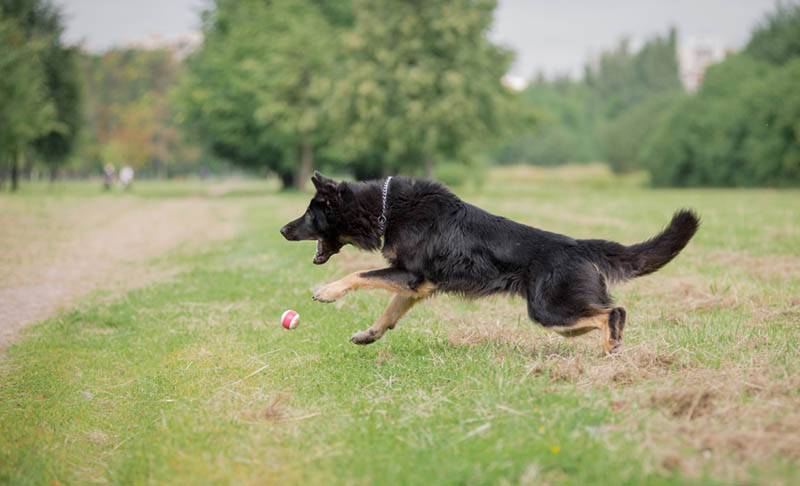
The fulfillment of all the points listed above is checked and evaluated by experts during the exam. On it, the dog must demonstrate the acquired important skills – endurance, obedience, calmness, as well as the ability to understand commands for dogs and follow them.
Dog Behavior Correction
The course is intended for those pets whose behavior needs to be corrected. Noticing that the behavior of the pet constantly deviates from the norm, that he does not obey your commands and cannot be educated, immediately resort to the help of professionals. By the end of the training course, your dog will learn:
do not pull the leash and do not try to get ahead of the owner on a walk;
do not beg or steal food from the table;
not show aggression towards people and animals on the street and indoors;
do not occupy the master’s place in the dwelling without permission (whether it be an armchair, bed or chair);
do not bark and howl at home, left alone;
do not gnaw or damage the owner’s property;
do not go to the toilet wherever you like in the absence of the owners;
not to be “greedy” (to touch the things of others, but not to give your own);
not be afraid of sharp sounds, noises, strangers and animals;
calmly visit a doctor and cope with other fears, if any.
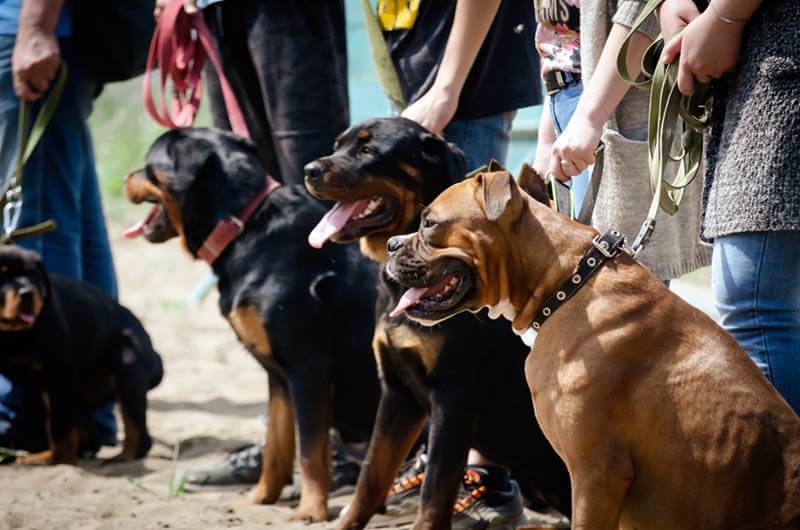
The reasons why your pet may exhibit restless or harmful behavior can vary from an imbalance in the relationship with the owner, innate characteristics and character traits, to living conditions and the influence of external factors. Having completed a course led by specialists from the dog training center who know how to train a dog, you will make life easier for yourself and your pet.
International Obedience Program (Obidiens)
It gained particular popularity in European countries and the USA. The purpose of the course is to educate a true companion for the owner, who unquestioningly fulfills all his requirements, including those given at a distance or without voice commands for dogs.
Obedience competitions involve several participating dogs competing with each other in the speed and quality of the tasks performed. Championships under this program are held all over the world. Pets aged six months and older are accepted for the training course.
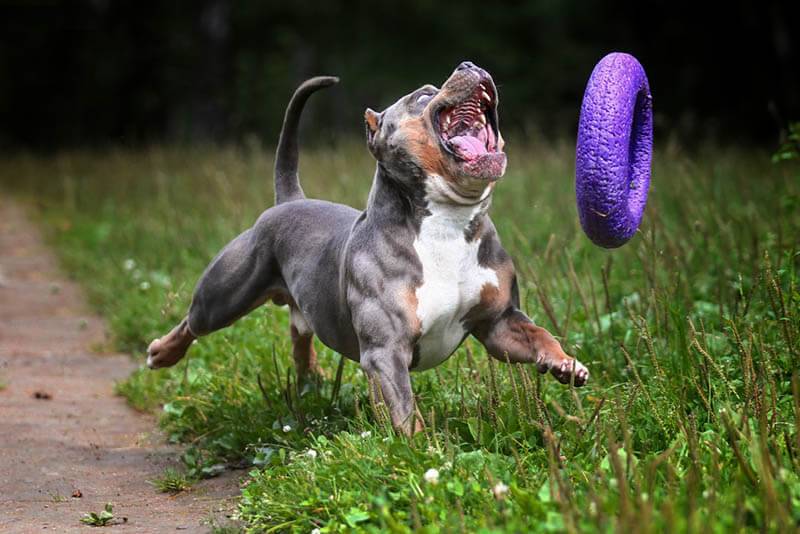
Entertaining and educational program (Agility)
This program is designed for those who want to learn how to pass various obstacle courses at the highest level with their pet. The result of the course will be a complete understanding and fulfillment of all tasks by the dog without the help of the usual collar, leash or treats for commands. During exercise, direct interaction between the owner and the pet is excluded, this applies to feeding and other encouragement.
Agility is aimed at developing the dog’s skills such as agility, quick reactions, the ability to concentrate and work in pairs; the program also improves the physical performance of the ward. Those who have completed the course develop strong relationships based on understanding each other and complete obedience on the part of the animal. There are no age restrictions for classes, but it is better to wait a bit until your pet gets used to you and the world around you. The sporting nature of the discipline allows you to grow a real champion, with whom you can then take part in agility competitions.
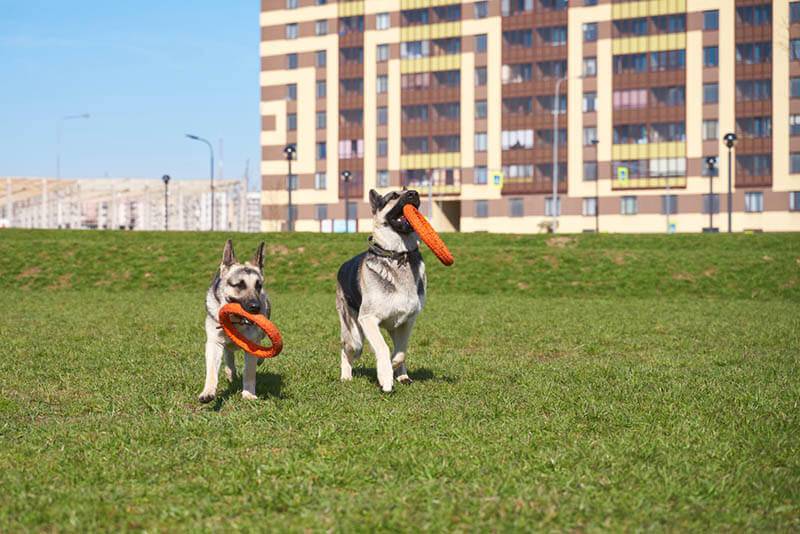
Mondioring training program
The discipline “Mondioring” was developed on the basis of various complex ring standards adopted in several countries of Europe and America. This course includes the basic elements of several other systems: obedience, protection and protection, as well as jumping. The purpose of the course is to recognize the innate qualities and abilities of the dog, the degree of its training, as well as athletic inclinations.
This very interesting discipline includes a variety of complex elements and distractions; to cope with them, the dog needs remarkable courage, dexterity and quick wits. In the process of learning, the pet masters the skills of behavior in extraordinary situations: it learns to move next to a person with a stroller, to properly handle people with disabilities, to protect children, to protect the owner. Passing the course allows you to identify the main talents of your pet and develop them to the maximum. It will not be boring either, because this discipline consists of many competitions and training scenarios, which also provide entertainment for the competition.
Protective Guard Service (ZKS)
This domestic dog training standard originated in Soviet times and is aimed at honing protective and guarding instincts, as well as olfactory skills. Initially, the course was intended only for service dogs (special services, law enforcement and military structures), which were trained to perform search and rescue work, search for dangerous objects and substances, as well as guards as part of an escort and guard.
Now ZKS is also suitable for amateur dog breeders who want to accustom their pet to certain commands for dogs. This course helps the dog not only not to lose his canine instinct and dexterity at home, but also contributes to the development of instincts inherent in him by nature, allowing him to maximize their realization. Key skills developed in the students of the course:
Sampling of objects (the ability to determine which things belong to one person, as well as to find them by smell; commands “Aport”, “Sniff”, “Search”);
Protection of objects (the ability to protect the master’s things left under the supervision of the dog; the command “Lie down”);
Detention (the ability to detain a person who is aggressive towards the owner and his family, as well as illegally entering the house);
Site search (the ability to find objects and people hidden in a certain area, as well as to detain the latter).
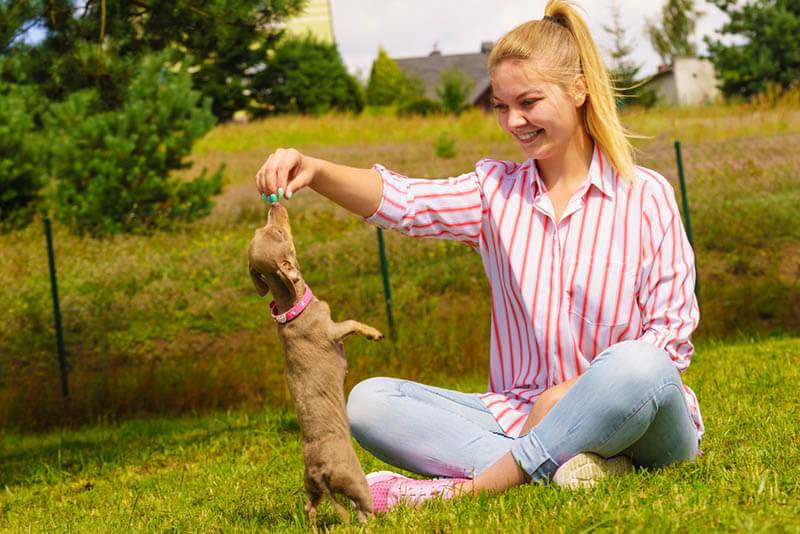
A dog that has completed a course of protective guard duty will become a real defender of a private or country house, will not let strangers and suspicious people near the family and property of the owners. And if necessary, he will show vigilance and speed of reaction in unforeseen situations.
Almost all physically healthy pets aged one year and older can study this course (with the exception of some breeds – small in size and very sensitive). Before this, the animal must pass and pass the standard for OKD.
This complex type of training requires the trainer to be highly qualified and have sufficient experience. Therefore, an experienced specialist should train the dog, otherwise incorrectly conducted classes can develop excessive fearfulness or aggressiveness in the pet.
IPO Regulatory Test (Schutzkhund)
The International Training Standard (IPO) is a test standard, the essence of which is to identify certain qualities in an animal that are necessary to perform certain tasks. In other words, the passage of this course allows the owner to identify whether the dog has the makings of a searcher, rescuer, shepherd or runner in a team, that is, for what purposes the pet’s talents can be used. The tests carried out according to this test are based on the German system of sports training (Schutzhund).
The program involves an assessment of the working qualities of the dog (endurance, courage, subtlety of instinct), its mental stability, the presence of ingenuity and the ability to train. All of these skills are tested and evaluated according to the Schutzhund system.
In general, the passage of this course is aimed at making the dog a happy, active and balanced animal, as well as the best friend for his owner.
The IPO standard includes three levels of training: tracking (“A”), obedience (“B”) and protection (“C”). From the very beginning of the course, all wards are trained in these areas. The result of the classes is an understanding of whether the dog is ready to perform certain duties. The system is three-stage: the first category (IPO-1 diploma) will be enough for those who plan to participate in exhibitions and breeding, the second category is allowed for those who passed the first, and the third – the first and second.
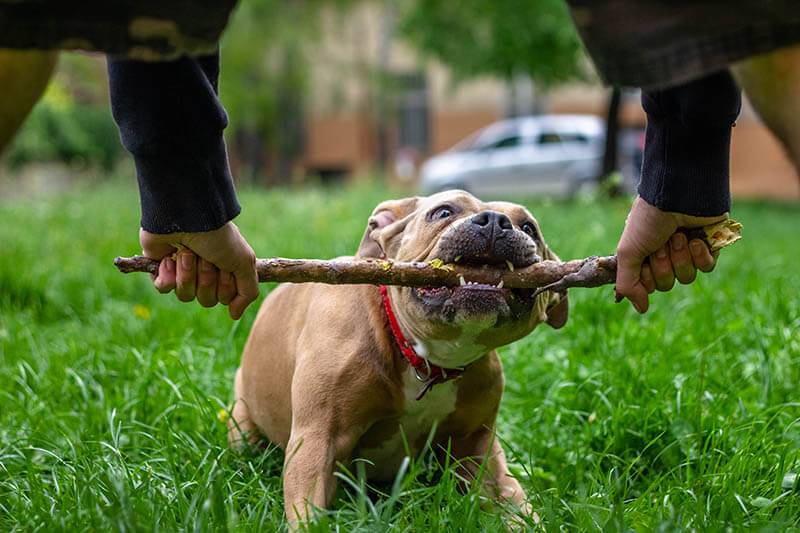
Basic rules of training
Any dog needs not only feeding, walking and caress, but also education. Whether you decide to hire a professional to train your pet or take care of this issue yourself, in any case, you need to know what you can and cannot do and why.
Anytime and anywhere
Training cannot begin and end only on the dog playground or on the street. This is the owner’s job. You interact with your dog in different situations, and all of them are great opportunities to teach him something.
Start simple
“Sit”, “beside”, “to me”, “down”, “fu” – these are the five mandatory commands for dogs that they must know and follow. Once your pet has mastered them, you can move on.
Be realistic
Do not demand the impossible from a dog. Somersaults and unquestioning obedience are the result of a long and painstaking work of the owner. Set realistic goals for your pet. After all, your task is to make living together comfortable and safe, and not to raise a circus star.
Stock up on patience
Yes, not all breeds are easy to train. For some (for example, Chow Chow), training is contraindicated, since the peculiarity of this breed is independence. These dogs make decisions based on their own assessment of the situation. Pay attention to the characteristics of the breed before you start training. This will make life easier for you and your dog and save time.
Who is to blame
If something goes wrong, the dog does something wrong, then the one who gives the commands is always to blame.
Remember: “Any order that can be misunderstood will be misunderstood.” This military saying also applies to dogs.
Once and for all
If you forbid something, the ban should always be in effect. With no exceptions.
Accurate execution
If you want your dog to perform a certain command only in this way, and not otherwise, immediately set this task for her (and for yourself). Making mistakes or inaccurate execution in the hope that you will correct it later, you actually take up a lot of time for yourself and the dog. Learn right away. Then it will be much more difficult to retrain.
Take it step by step
If you give a command to the dog, allow time for it to be carried out. Do not give another command – this will only confuse the animal.
Only truth
Animals do not know how to forgive deceit. Once you’ve lost your pet’s trust, you’ll have to work really, really hard to get it back. And there is no guarantee that you will succeed. Therefore, establish a trusting relationship with the dog from the very beginning. Without trust there is no respect, and without respect there is no submission.
Take care of your dog
The appearance of anxiety, aggression, inappropriate behavior on the part of the dog – for the owner, all this is a reason to assess the situation and try to understand what is wrong.
Who is stronger
Trying to teach a dog something by using brute force will not lead to anything good. Even if you achieve obedience, it is likely that sooner or later the dog will take revenge on you. And, believe me, she will choose the right moment for this.
A pet is a companion and friend. Keep this in mind every time you feel like punishing your dog.
The difference between training adult dogs and puppies
Depending on the age of the dog, they require a special approach, including when it comes to training. It is important to understand how to train a dog depending on its breed, talents and physical fitness. Of course, an adult dog has a certain life experience and, one way or another, understands and orients itself more in what is happening around, while a puppy is actually a blank slate with a set of instincts, its upbringing should be approached especially carefully.
The main difference is the use of human force. So, in no case should it be used to train a baby, it is necessary to focus on the interest and curiosity shown by a young pet, as well as a food target. He will definitely react to the treat. At the same time, adult dogs can exhibit dominant behavior; for them, treats are not always an incentive to follow the command, so there is interference from the owner. We are talking about techniques that are harmless to the animal, such as pressing on the sacrum when landing or holding on its side. Also, for young pets, training is not suitable, one way or another contributing to the development of aggression. For example, teaching dog commands such as “Face”.
Regardless of the age of the pet, before starting classes, find out how to properly train a dog at home, familiarize yourself with the key rules and principles.

How to teach a dog basic commands?
Not all owners consider it necessary to attend specialized cynological courses, within which they usually provide basic knowledge about the principles of training. But this does not mean that self-training with a dog will be ineffective.
Everything has its time
Everyone understands that it is pointless to demand the same from a six-month-old baby as from a 5-year-old child. It’s the same with dogs. If the puppy is not yet ready to perceive the material, then you will only lose time. It makes no sense to start any classes earlier than 2-3 months. So before you do anything, make sure your dog is ready for it.
A complex approach
You can not train a dog only on weekends or once every two weeks. This is a continuous process of communication with the animal, which should not be interrupted. Start with 10 minutes of daily exercise. Then gradually increase the time.
Focus on how quickly your dog learns the material. This will be the best signal for you – is it time to move on or is it better to repeat everything again.
What do you need
The owner should understand that in order to successfully train the dog, he will have to stock up on patience and treats to positively reinforce the behavior of the animal. Actually, these are the main necessary things, without which you are unlikely to succeed.
Operating principle
Name the team;
Back up your words with gestures that show what you want from the animal. For example, you want the dog to lie down. Then you say “Lie” and crouch next to the dog, pressing the fist with the treat to the ground;
Repeat until automatic. Start each new lesson by repeating the previous commands. The task for you is to make the dog automatically respond to your commands;
Gradually give up treat reinforcements;
Have fun interacting with your dog. Dressing is wonderful. The dog is your friend and family member, and activities should bring joy to both of you. Otherwise, what’s the point?
What to look for
The first time you will need to establish contact with the animal. Do not worry that the dog will only follow your commands and will ignore the rest of the family. In the beginning, of course, it is advisable to deal with an animal without other pets. But this is only necessary in order not to confuse the dog – it must clearly understand who is in charge in the pack. If she obeys you, then other family members will not have problems.
It is categorically impossible
Never use negative reinforcement. Punishment for disobedience, blows, screams, may help you quickly develop a conditioned reflex in a dog, but you risk breaking the animal’s psyche and getting a completely uncontrollable beast. Love, patience and affection are the three pillars of any training. If you think otherwise, then think about why you, in fact, have a dog?
Necessary equipment
For self-study with a pet, you will definitely need a collar and a leash – for control and manipulation, a stick or a toy – for fetching, as well as a pre-prepared treat. These simple things may be enough for your dog to follow basic commands.
If you plan to prepare your dog for more serious exercises, such as steeplechase, wall climbing, descent and ascent, you need to equip the site in advance, prepare barriers and other devices. You should read the necessary literature in advance and choose the right equipment depending on the age, height and weight, breed and physical abilities of your dog. It is best to start this kind of training at a cynological school, and then, following the example, continue at home.
List of 10 dog training commands
Here is a list of ten of the most common dog commands and a short guide on how to teach your dog to follow them.
“Sit”
This is perhaps the most popular and simplest command. The landing skill is an integral part of any training course, it is the basis for many other commands for dogs.
Easy way to teach:
Wave the treat at the dog’s nose and place your hand behind its head.
Raise your hand higher (the dog will sit down to see the treat).
Give the sat down pet to taste what you want, praise and say the key “Sit”.
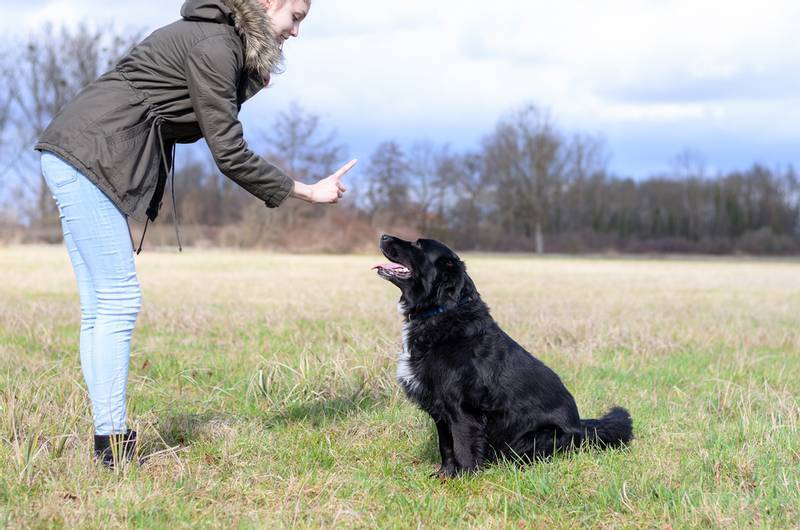
“To lie down”
One of the main, following after the recall to the nickname and landing, is an important skill. Useful for calming the dog, medical examination, endurance training.
What to do:
Show and let the treat be smelled, lower the hand holding the food down and stretch it forward a little so that the dog reaches for it.
Press lightly on the withers of the animal so that it is in a prone position.
Treat the pet and say the command “Lie down”. Repeat exercise.
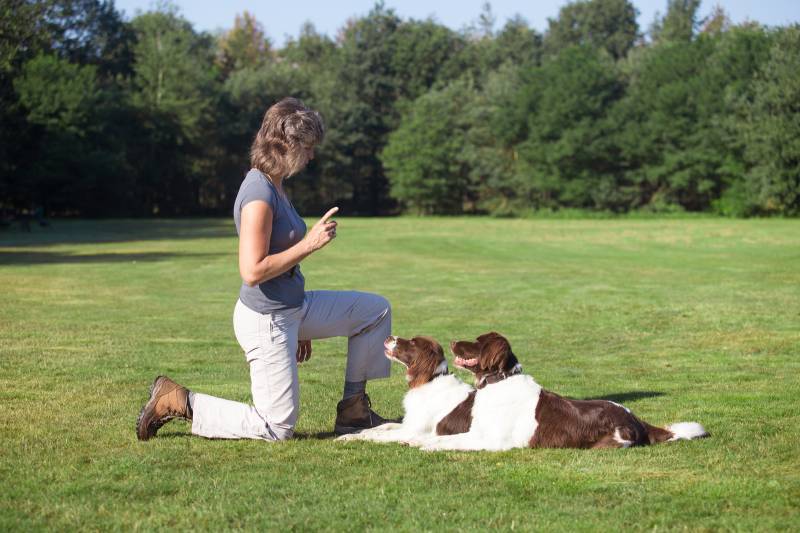
“Vote”
Today, this dog team is trained only to work in special services – for example, search, rescue, drug control. In ordinary life, the owner can use it as an element of the game, having first taught the dog the “Sit” command.
Show a hungry pet a tasty treat, seeing which the dog should sit down. Feed him.
Show the second tidbit for which you need to vote. Clearly give the command “Voice”.
Give treats only if the dog barks. It is worth repeating the exercise until she distinctly barks.
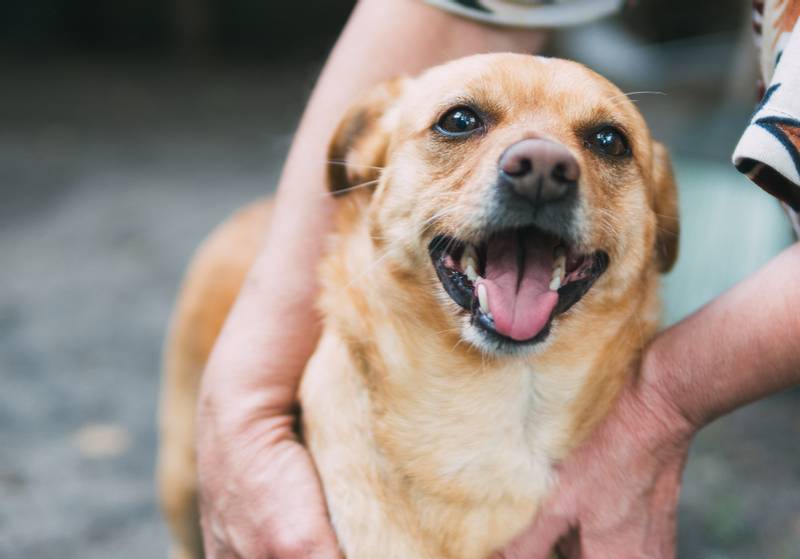
“Lifetime”
Most often used for entertainment, care and treatment: when the owner wants to play and fool around with the dog, show his skills to others, clean his coat, as well as at the doctor’s office so that he can examine the animal. It’s worth starting to study when the command “Lie down” has already been learned by the pet.
Lay your dog down and let him sniff the treat.
Gradually bring your hand behind the back of the animal, prompting it to reach for the desired and roll over on its side.
Say the command “Die” and when the dog is frozen on its side, treat it and pet it, pressing lightly all over the side to secure the pose.
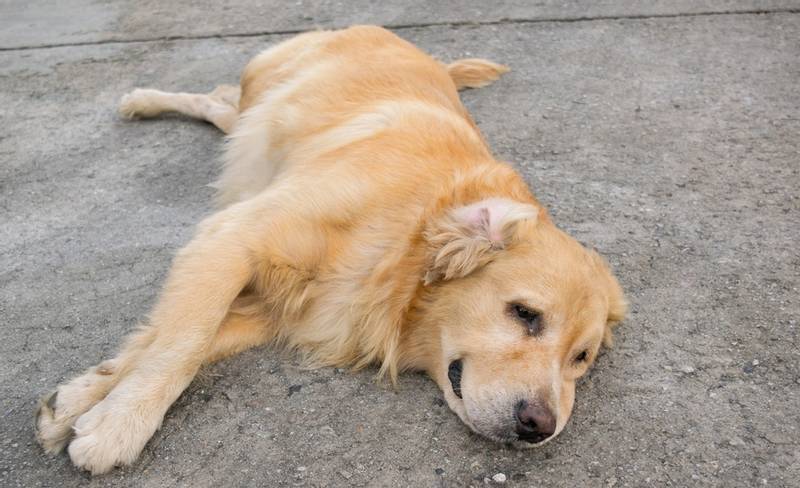
“Nearby”
A dog that learns this command is considered to be really well-mannered. The pet should go to the left of the owner, the right shoulder blade of the animal should be flush with the owner’s leg, the space between them should not be wider than the dog’s croup. The dog must speed up/slow down, like the owner, and unquestioningly sit next to him.
Putting a short leash on the dog and commanding “Next”, make the dog sit down to your left.
Step back and repeat the command – the dog should not only come up, but also sit on the left side.
For successful completion, treat your pet with delicious food. Repeat the exercise, each time moving away from the animal at a greater distance.
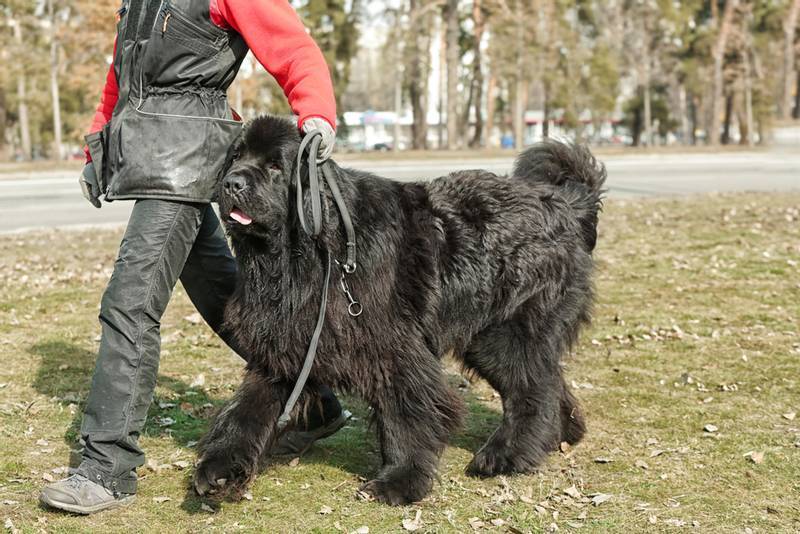
“Give me a paw”
Among commands for dogs, this one is quite simple. You just need to stock up on treats.
Place the animal in front of you, say “Give a paw!” and substitute your right hand, holding it on weight.
Release your hand, take the left paw of the dog with it, lift it up and release it. Then, after praising your pet, feed him some treats.
Do the same with the other hand (relative to the other paw). Repeat the exercise, changing hands, until you have fed all the delicious bites. From now on, hold the paw in your hand longer, you can tamp the paw a little if the dog is in no hurry to give it himself.

“Stand”
Usually this skill involves getting the dog up from a sitting position. The dog on the leash should sit on your left.
Command “Stand” by bringing the treat to your pet’s nose, and gently move your hand so that he has to stand up.
Pet the rising dog and reward him with a well-deserved treat (he must stand all this time).
Repeat the exercise regularly several times, then increase the standing time, giving more treats at increased intervals – so that the dog understands that you need to not only stand up, but also linger in a standing pose longer. The same principle applies to training the execution of the “Stand” command from a lying position.
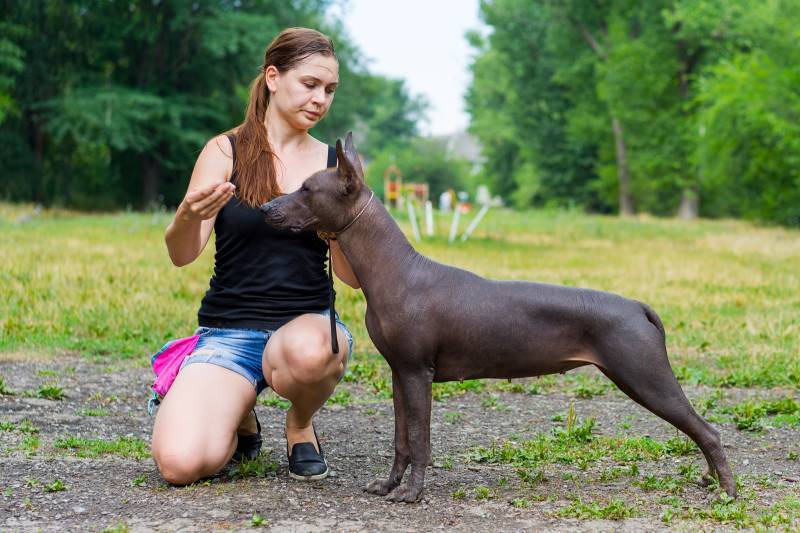
“To me!”
An important skill for walking dogs without a leash, the essence of which is for the dog to go to the owner on command. It’s worth training with a hungry pet so that he definitely doesn’t refuse treats.
Take the leash, previously set to an average length, in your left hand, and a treat in your right hand.
Standing close to the dog, command “Come to me”, plant it and feed the reward. Repeat what you have done and treat yourself to a treat again.
From now on, give the command, moving away to a distance. Realizing that a tasty piece is waiting for him, the pet will come up and sit down next to him in anticipation of the treasured treat.
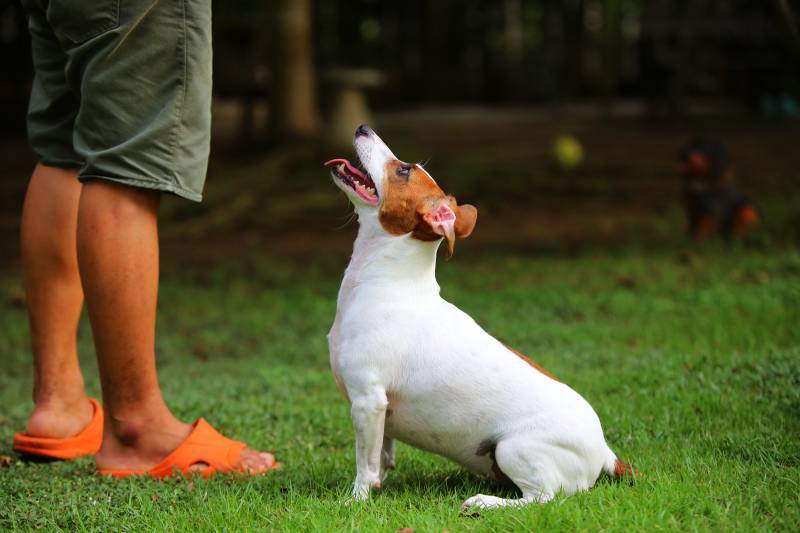
“Ugh”
This is a signal for the animal, symbolizing impending troubles, and for the owner, a way to avoid unwanted behavior or actions on the part of the pet. Used if:
The dog is trying to eat something lying on the ground (or the ground itself).
Picks up trash, drags it along.
Aggressive towards other people and animals.
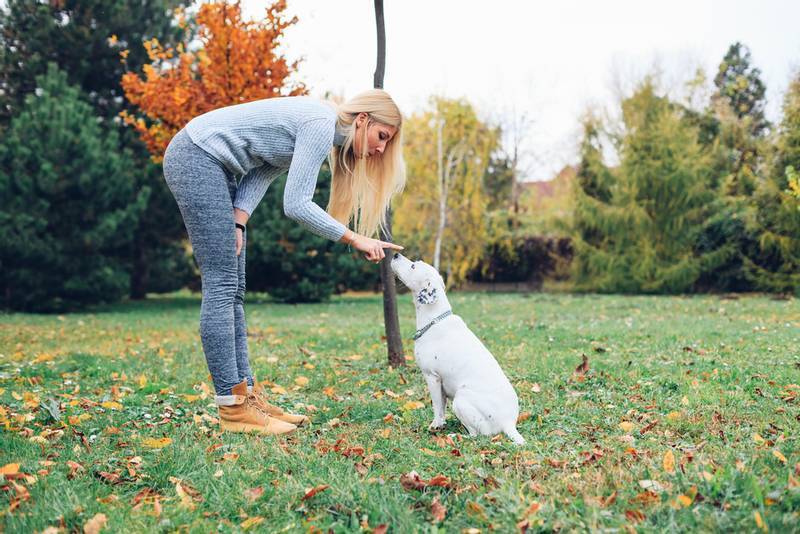
You should not command “Fu” all the time, in different situations it is worth resorting to other commands.
“Face”
It is better to entrust the training of this team to a professional. An experienced cynologist knows how to train a dog without negatively affecting its psyche and behavior. A dog is allowed to such classes at the age of one year and older, and also if it already has experience of disciplinary training, quickly and meekly responds to the instructions of the owner, and he knows how to manage the ward in various situations. It is important to understand that after the course, the pet can change its attitude towards others and behave differently, including with neighbors.
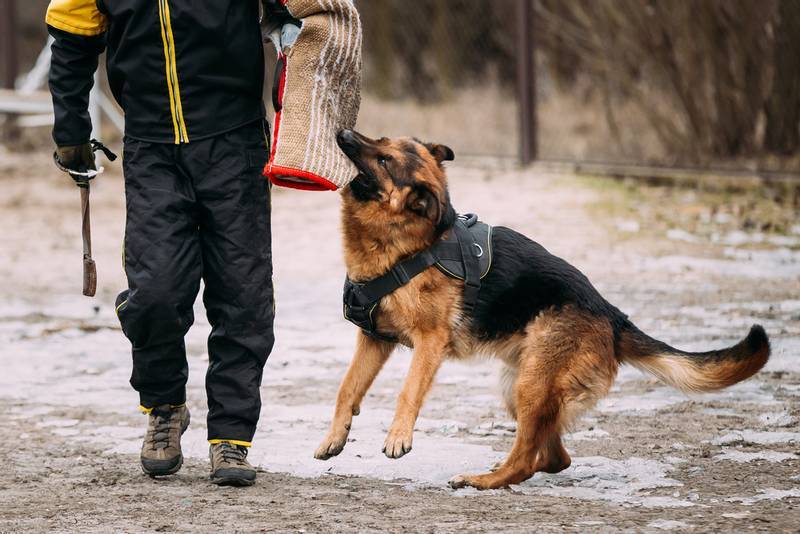
All these commands can be taught to the dog at home, the main thing is to set a goal and practice regularly, repeating the exercises.
3 2021 June
Updated: 14 May 2022



